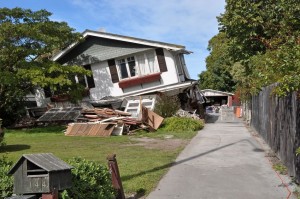By Marci Liroff
We had a 4.4 earthquake here today in Los Angeles. It was yet another kick in the pants reality check to get better prepared. Those that know me know that I’m pretty vigilant about this stuff, but I realized I’ve slacked a little and could use a refresher course in my emergency preparedness. I know many of you don’t live in earthquake country but you can use this info for ANY emergency.
I know you don’t want to hear/read this. I know it’s overwhelming.
Even if you get HALF of this stuff and become aware you’ll be smarter and won’t have to rely on the system when we have a disaster.
Remember that when the power goes out the gas stations will stop pumping gas and the ATMs will stop spitting out cash. Do you always have at least a half a tank of gas in your car? Do you have extra cash stashed away? Society will become “cash and carry” as soon as a disaster hits.
My gas turned off today from this little earthquake.
Do you know how to turn on your gas? I didn’t. My lovely neighbors Mike and Pam helped me.
At the very least, read through my friend Peter Hankoff’s guidelines. Trust me that he’s been there and he knows.
Get educated!
******
Due to popular demand, I’m reposting my earthquake prep manifesto. If you were in this morning’s LA earthquake, bear in mind when you still have electricity, it probably is an indication that things weren’t too bad. A 4.4 isn’t all that much; though granted being at any epicenter feels like the end of the world, but bridges are standing, water is flowing and electricity is on. OK, here’s the skinny:
Having trained as a civilian emergency responder with the LA Fire Department and spent many years in Disaster Services with the American Red Cross, here’s a list of what I’ve learned that is important for sustaining a sense of sanity and safety after an earthquake…or any big emergency, actually. But it boils down to a few essential things:
1 – You need to have more water than you think. No, it’s not because you’re thirsty, but because you need to keep clean so you won’t get infections, and you might even need to cook up a pound of rice, which will keep you alive a long time. At least 15 gallons per person per household…really. I’ve got 60 gallons, and I’m barely home (Yeah, you’re coming to my house right?) If all hell breaks loose, water is the #1 commodity. Don’t think you can drink the swimming pool without any consequences: you will get diarrhea. Then you’ll need even more water.
2 – You need to have more batteries than you think, and one flashlight per person (all the same batteries make life simpler), plus one flashlight in the car.
3 – Work gloves – they don’t have to be fancy, but they need to be leather, NOT cloth, because if you end up working a fire, cloth burns faster. Your hands are the most valuable tools you own…protect them. A gash or burn across the palms will quickly render you useless. If you think there’s a fire in the other room, crouch down feel the middle of the door with THE BACK OF YOUR HAND before entering.
4 – A crowbar in your bedroom to get you out of your bedroom. A crowbar in your kitchen to get you into your bedroom…or anyone else’s! (btw: the kitchen is THE most dangerous room in the house – sharp objects, broken glass, dislodged appliances and be careful before opening any cupboard or you may be showered by china and whatever else got jostled.)
5 – You need to learn exactly HOW TO:
– shut off your water
– shut off your gas
– shut off your electricity
– work a fire extinguisher (aim it at the BASE of the fire, NOT the flames and use sweeping motion to kill a fire)
– put together an out-of-state contact number for the family to communicate – long distance lines are up sooner than local lines, and cell lines will probably be down all together.
– administer emergency first aid & CPR. (You’ll always hear of people dying from heart attacks right after the earthquake. Do you really want to watch someone die just because you didn’t know what the hell to do?)
OK, here are the basics:
HOME:
minimum of 15 gallons of water per person (don’t forget pets – a gallon a day)
first aid kit – and learn first aid and CPR!!!
work gloves
heavy shoes – extra pair in your car for walking home when the roads are blocked
2 crowbars
canned food for one week
can opener (non electric)
$100 in singles
$20 in quarters
one flashlight per person – 2-D cell (or higher number of D cells)
20 D-cell batteries…or more – not less
1 box of strike anywhere matches
1 camp stove
3 canisters of camp stove fuel
1 pipe wrench for shutting off your gas line (and restoring it) – I have the new kind (I just discovered) that works with a flathead screwdriver
1 week supply of pet food
1 deck of cards for keeping children out of your hair
1 phone that plugs into your wall and requires NO batteries
1 portable radio and/or TV plus 3 set of batteries for it
10 candles (make sure there is NO gas leak BEFORE ever using them)
extra medications
minimum of 1 roll of duct tape
1 whistle per person (so people can hear you if you’re trapped)
1 roll of plastic sheeting for instant repair to broken windows
photos of family – to help emergency services locate them
CAR: (put this in a knapsack)
1 gallon of water
snacks – granola bars or trail mix are simplest
heavy walking shoes/boots
work gloves
$50 in singles
1 first aid kit
one 2-D (or higher) flashlight
4 extra 2-D batteries
map of your area
pad and pen – to leave a note of your whereabouts and route taken
extra socks
portable radio
1 whistle
2 disposable foil sleeping bags (AKA “space blanket”)
photos of family
OFFICE:
1 flashlight and extra set of batteries
1 gallon of water
1 pair of heavy shoes for walking home
1 pair of work gloves
snacks
1 first aid kit
extra medications
$10 in change (pay phones are the first phones to go back on-line after an emergency – use one to call out of state contact)
1 crowbar
1 whistle
SCHOOL:
1 flashlight and extra set of batteries
1 bottle of water
1 pair of work gloves
1 snack
photos of family – to keep calm
$5 in change
1 disposable foil sleeping bag (“space blanket”)
I know this can all sound daunting, maybe even crazy, but all this stuff is going to cost a lot more if you don’t have it. Peace of mind and a sense of preparedness can save your life and the lives of others around you.
If you want to know what to do DURING an earthquake – please check out this URL.
FEMA: What to Do During an Earthquake
Here’s a great PDF to download “What To Do Before, During, and After An Earthquake”
Please remember that standing in a doorway can get you hurt by the door! (That doorway idea is the old school approach designed if you live in a brick building because doorways are considered safer than the walls crumbling around it.) But any interior hallway without a lot of stuff on the walls is pretty safe. Sit low with your back to the wall and ride it out. It will end. Also, do you have something big and heavy over your bed? It can hurt you if it’s not secured to the wall. Also think twice before running out of a building. A lot of stuff shaking lose could kill you. If you’re in your office, get under your desk (unless it’s glass) and hold on and ride it out.
Another crucial thing to do ahead of time is to be sure you’re financially prepared for an earthquake or disaster.
Check out this article with pertinent information from Bankrate.
Feel free to forward this.
#earthquake
I’d love to hear your comments about how you’ve prepared your house/office/car so we an all benefit!




Recent Comments